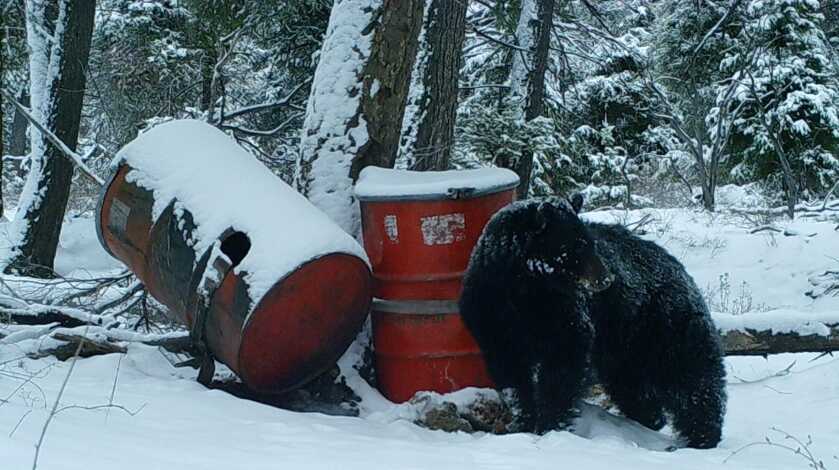
The lengthening daylight hours, warm days, and freshly spouting green grasses all help the black bear awaken from a long winter hibernation. It is also the time that ungulates like deer, elk, and moose begin to calve leaving them at their most vulnerable. In many states, Wildlife Biologists have proven that black bear predation is the greatest factor in elk calf mortality rates, which is why it is vital for hunters to head afield each spring to help manage the population of these large predators.
Hunting black bears using bait is a fun and effective way to sustainably pursue and harvest black bears. There are several states that allow bear hunting using bait, however, it is critical that you adhere to the laws on baiting in your individual state as laws vary from state to state.
Before you load up and head out to your next bear hunt, be sure to first read my top 5 tips for baiting bears.

1. Bear Behavior
In the spring there are a couple of primary driving factors for black bears, the first being food. Because bears emerge from hibernation hungry with a digestive system that needs to get moving, you will find them feeding on fresh grass, dandy lions, shrubs, and grubs. Bears are in search of rich protein sources and will often stay in close proximity to wildlife like elk, deer, and moose, awaiting the arrival of a newborn, easy-to-catch meal.
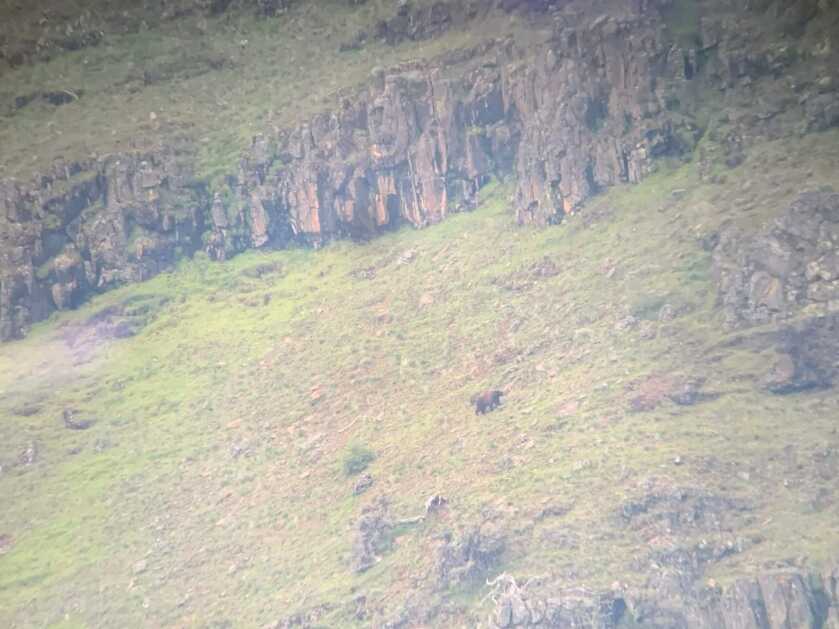
The second motivation for bears in the spring is mating with other bears. The peak time for breeding occurs in the months of May and June. With an incredible sense of smell, a boar will search day and night and travel miles, looking for a sow in heat. A ready to breed, hot sow will often attract and concentrate several boars into an area.
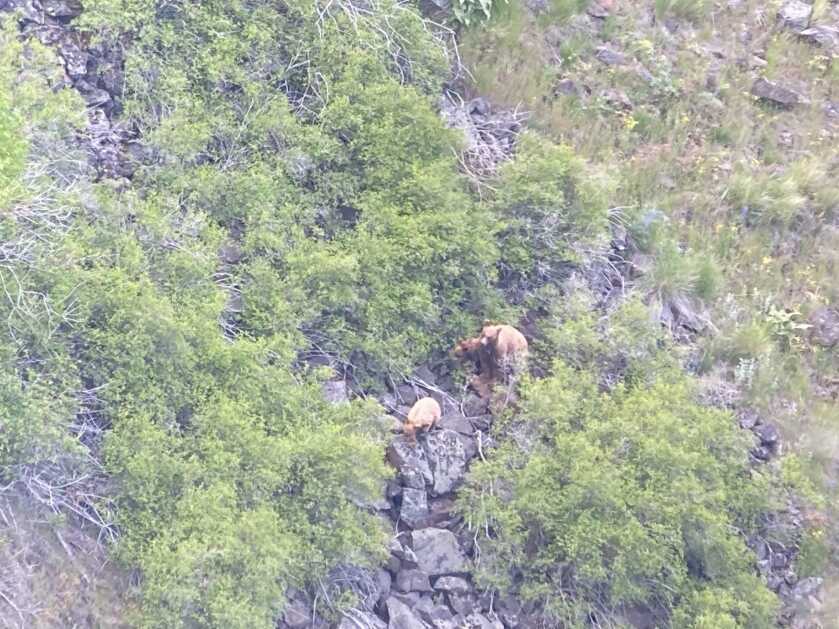
Sows with cubs will often avoid boars because they are likely to attack and kill the young cubs in order to force the sow into estrous giving the boar the opportunity to breed. Because of this, you will often find sows with cubs earlier in the day feeding where she is less likely to encounter a big boar.
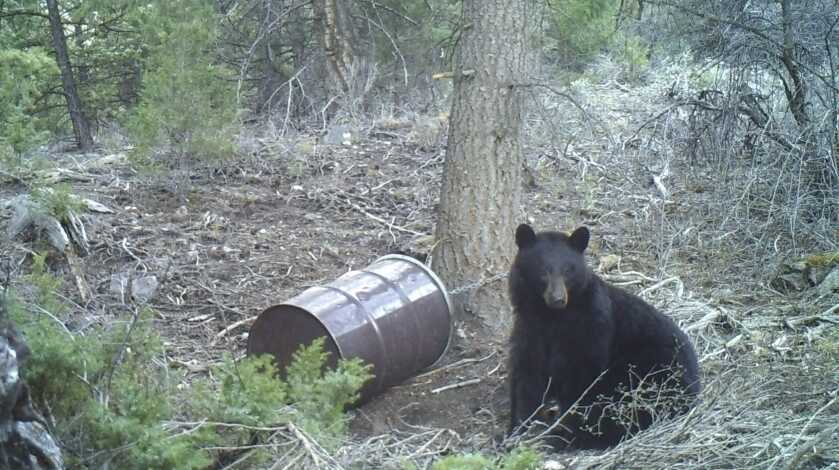
2. Bait Location
Before you head afield with a truck full of bear bait and an empty barrel or two, taking the time to virtually scout out a location to hunt bears will help you find a few possible locations to place your bait. Digital map services like OnX Hunt help to navigate unknown terrain with feature-rich layers that include 3D views, historic burn locations, roadless areas, cut blocks, and more.

With bears when you find the food, you will find bears, the 3D view in OnX will quickly show you locations that bears can feed on lush spring grasses while having the protective cover of timber nearby as well as south-facing slopes, logging cut blocks, historic burns, and river bottoms. There are even details in the layers, for example, the Historic burn layer found in OnX, will tell you the age of a burn and how many acres were burned. Keep in mind, that ungulates like elk and deer love to feed in burns so there are even more reasons for bears to concentrate around burns.
The goal with your bait is to attract hungry bears therefore, your bait can serve as a primary food source or a secondary food source. When you are targeting older, mature bears, they are extremely smart and have most likely been hunted from a bait at one time or another. Because the older mature bears are smart, they are harder to hunt. The wind is going to be a critical factor in your hunt success.
Keep in mind the entry and exit wind patterns. Many hunters choose to stick to afternoon hunting hours which means predominately upwards thermals, while morning hunts will have predominately downward thermals. Regardless of the time that you choose to hunt, find an access route to your bait that grants you the best route with the least likelihood of bumping bears or bears smelling you on your way to your bait. This can even hold true if you are driving an ATV that can be heard for miles. Park it and walk as much as you are able and you might consider backpacking or using horses to carry your bait into the backcountry.
In order to attract the bears to your bait, they need to smell it and feel safe approaching the bait during daylight hours. Placing your bait in a wide-open space will most likely condition the bears to feed nocturnally under the safety of darkness. Consider placing your bait in a location that has good cover where bears will feel safer approaching the bait during daylight hours.
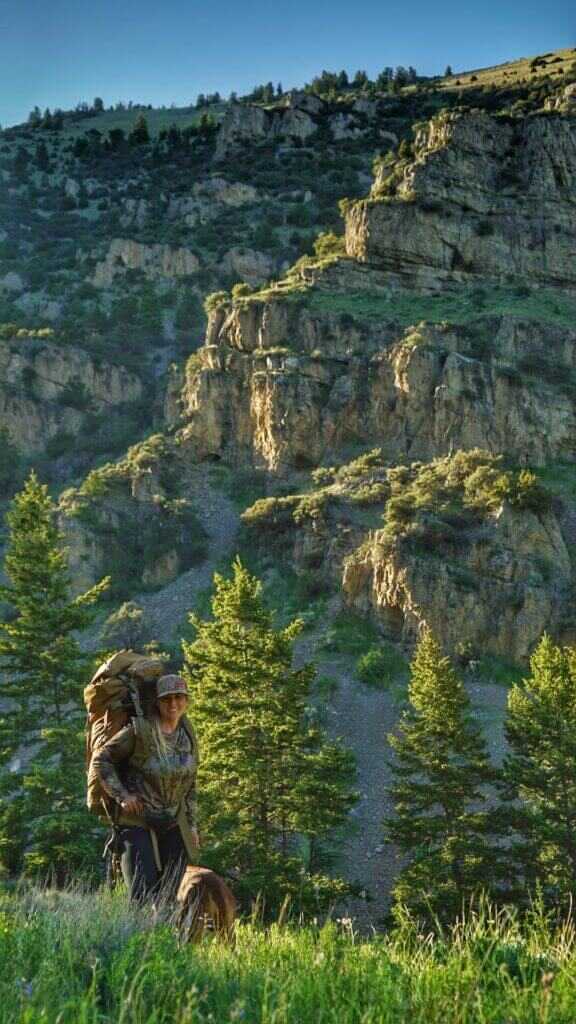
To help escape the pressure of other hunters, look for locations that are the most remote that you can comfortably access and are physically able to manage restocking your bait. Less traveled areas like road closures or hike-in-only areas may increase the likelihood of finding bears.
Also, if you can, place your bait in a location where you have a line of sight to the bait from camp or a short walk away to a vantage point. This is a great strategy for rifle hunting bears over bait. If you are bow hunting, a nearby vantage point may help you avoid bumping a bear that is at or near the bait before you attempt to climb into your stand.
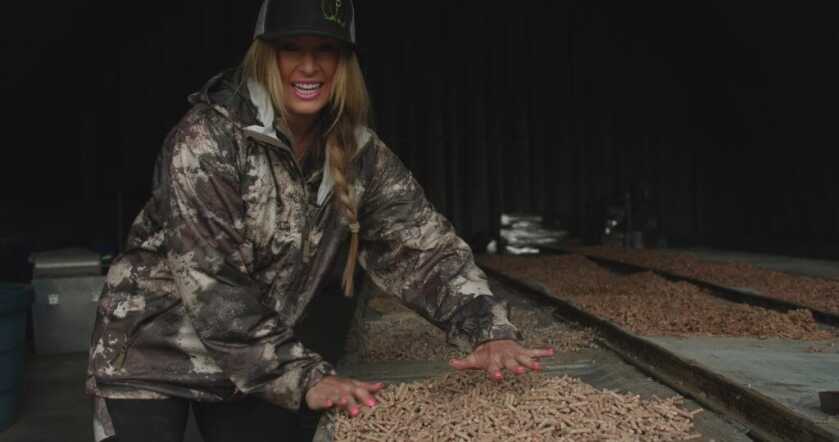
3. Types of Bait
Bears will eat just about anything from candy, doughnuts, dog food, oats coated in cooking grease, you name it they will pretty much eat it. This time of year bears are in search of protein and fat and will gladly use any easy to come by food source. The trick is finding a reliable source for your bait to keep your bait barrel stocked.
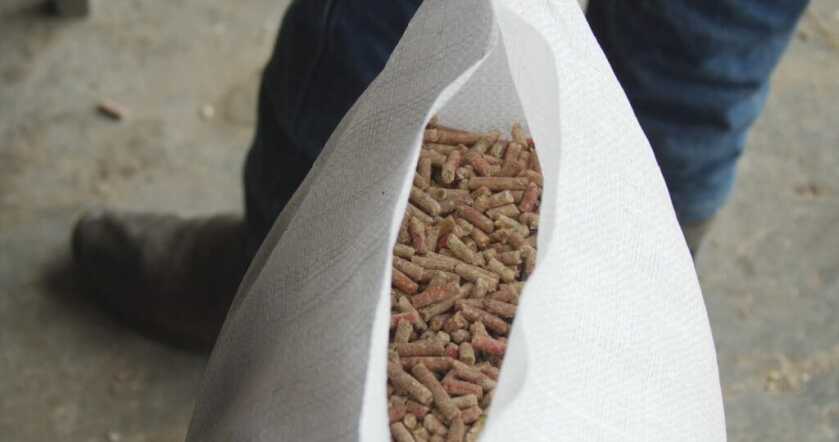
Master Bait Wildlife Pellets make bear baiting much easier. You don’t have to wait on expired pastries or keep and maintain an off-season freezer bait storage system. The premium pellets are a delicious combination of candy, chocolate, and other ingredients. The pellets are sold in 50-pound bags that are clean and easy to carry to your bait without a mess.
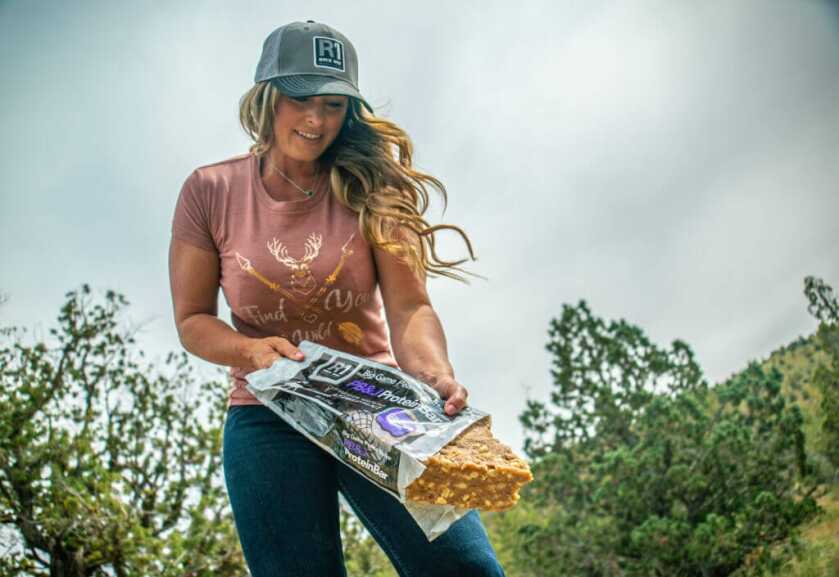
Rack One’s Big Game Peanut Butter is 100% pure ground peanuts and is sold in easy-to-carry 5 pound bags.
Scent is king! In order to maximize attraction, spray the bait area with an artificial scent like glazed donut. Make sure to check out Tink’s Hot Shot bear bait mist.
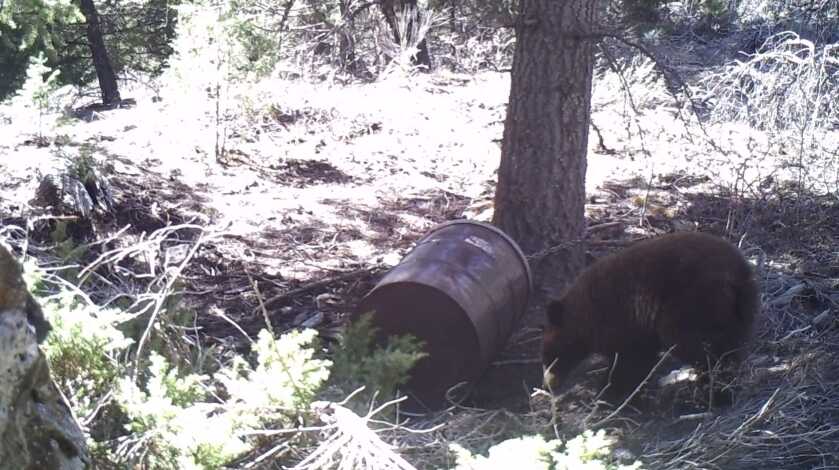
4. Trail Cameras
Knowing what is coming into your bait will help you to identify individual bears that are frequenting the area while determining any feeding patterns that may help you during your hunt. Knowing what bears are in the area will be especially helpful if you spot a bear that is on a hillside or location that is not directly at your bait site. Cameras will also let you know if a sow comes into estrous with additional boars following her around or with her directly.
Quick Tip: Check your trail camera before you fill your bait to help avoid placing food smells onto your camera. Wipe down your trail camera with Dead Down Wind field wipes to eliminate any food odor that you may have inadvertently put on the camera.
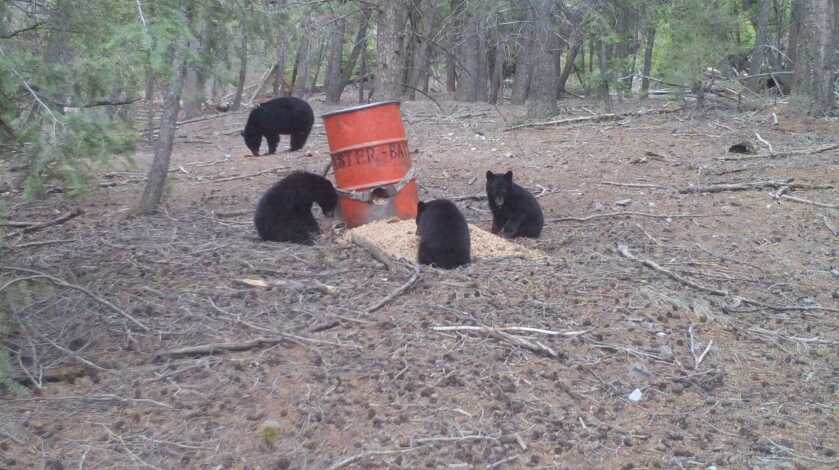
5. Field Judging Bears
Black bears are one of the most difficult animals to judge. Placing your bait in a 55-gallon barrel will help make estimating size much easier. However, if you don’t have a barrel to use or it gets tipped over, a spray-painted line on a nearby tree may be of help. You can also use terrain features such as a fallen log to help you field judge the length of the bears.
When a bear approaches your bait, pay close attention to the presence of cubs with the bear or nearby. In most states, it is not legal to harvest a sow bear with a cub under the age of one and in some states, a sow with any age cubs is not legal. Multiple bears that are together do not necessarily mean that it is a family unit consisting of a sow and cubs. It could also be young, newly independent siblings or a breeding pair. The bait should allow you to take some time to positively identify the bear and be sure it is of legal age, and not in a family unit.
A few things to consider when evaluating a bear is that boars are often wider in the chest, tapering into the hindquarters. Sows tend to be wider in the hindquarters, tapering into the chest. Head and ears are another great way to evaluate the size of a bear. If the ears look large atop the head and have very little distance between them, it is most likely a smaller bear. Large bears tend to have bigger more square heads which make the ears appear to be smaller and/or have a larger distance between them.
The demeanor of a big old boar is typically more deliberate with slow and steady movements. He will appear as a confident animal that stands his ground and will be less inclined to be skittish or climb up a tree. If you have young bears feeding at the bait and they suddenly climb a tree, get ready, it is likely that an older more mature bear is nearby.
As a general rule of thumb, the younger bears will feed at the bait earlier in the day and as it gets closer to dark, the older bears will start to show up to feed.
Because bears are extremely difficult to field judge, having the opportunity to closely observe and evaluate each bear in real-time at a bait, or using trail camera pictures, prior to harvest will help to ensure that you are taking a suitable bear from an area.
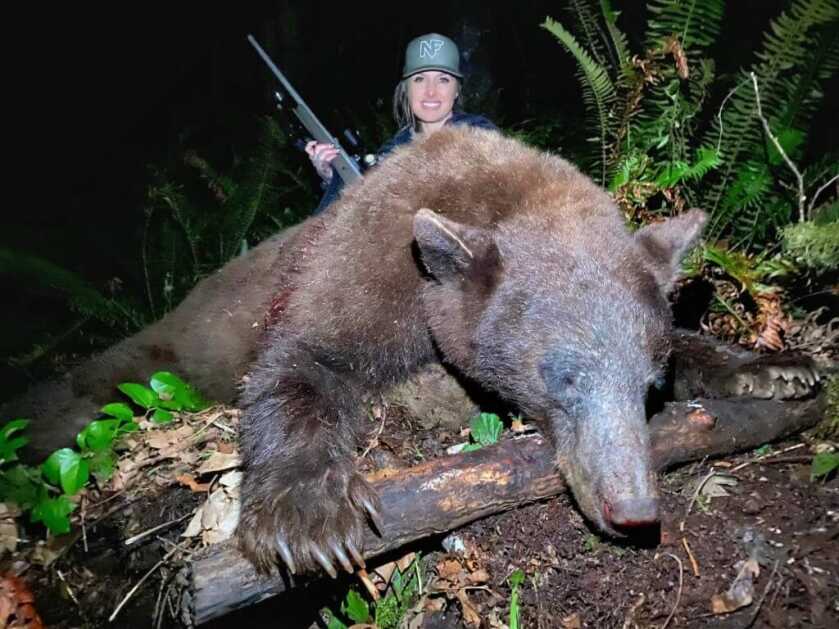


I have hunted black bear in Quebec several times. They almost exclusively use tree stands over bait pits. The land was owned by a lodge so they had all the waste and scraps from the restaurant and the various cabins. Even so they sometimes ran short. The guide had a .22 magnum revolver so he would go shoot some varmints if necessary. Bear love peanut butter! I will say that hunting bear on ground level is very difficult. They are in the same family as dogs and have the same sense of smell. Just as you said the bear need to smell the bait, they also need NOT to smell you. Good article.
I have baited bears for over 35 years in both Alaska and Maine. In Maine its a fall bait season. I place my baits on wooded ridge lines, (preferably hard wood) leading out of swamps and low lands. I find the bears tend to naturally travel the ridge lines in the fall seaking out beach nuts and other mass crops. As for bait in both Alaska and Maine I have had good luck with using popcorn mixed with peanut butter and molasses. Go to theaters and they will usually give you their unsold popcorn. I also use a little bit of butcher scraps at each bait and place some grease on the ground in front of the bait. Any bears, coyotes, Fisher, racoon, etc. That visit that bait leave a sent trail each time they leave. Free advertising is always welcome.
I have had good success bringing night time bears in during shooting light. I take a smaller pile of bear scat from another bait far away and leave it at the bait where the bear is hitting at night. I also bait that site lightly or skip baiting it at that time. The bears, I believe conclude that another bear is visiting the bait and a mature night visiting bear will show up earlier to get his share or run off the interloper. Now I maybe wrong as to the bears intention but I have had numerous night hitting bears start visiting the bait earlier when I use this method. It has worked many times for me over the years.